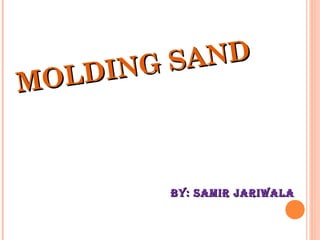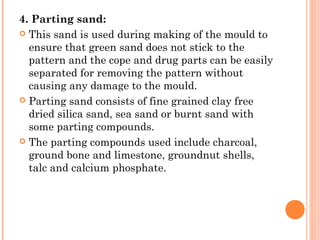Molding sand is a mixture used to make molds for metal casting. It consists mainly of silica sand, clay, and water. Different types of molding sand exist for various applications, including green sand, dry sand, and loam sand. Green sand is the most common and contains 15-25% clay and 6-8% water. The sand provides strength and permeability while the clay acts as a binder when hydrated by water. Proper control of the sand mixture and its ingredients is important for characteristics like strength, permeability, and thermal stability of the resulting mold.
















































